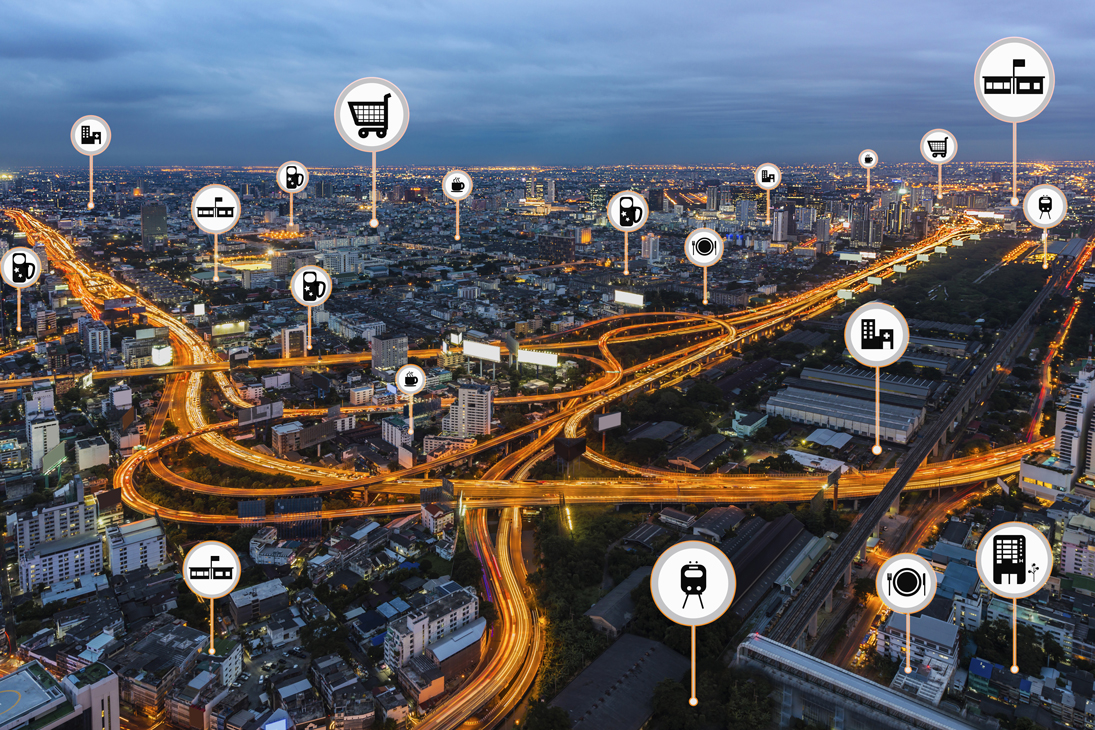Smart Cities: A Better Way to Live

With more than half of the world’s population living in urban areas, smart cities can utilize technology and data to make cities cleaner, greener, and more efficient.
Using data from sensors and cameras, South Korea’s Smart City Data Hub System enabled the containment of COVID-19 without lockdown measures. In Dubai, an AI surveillance system was used to identify citizens disobeying lockdown. In Boston, disinfectant robots cleaned the city’s food bank, allowing the organization to continue serving those in need during the pandemic.
It wasn’t just technology itself doing the work, but technology connecting—and empowering—humanity.
Localized neighborhood apps informing residents about garbage collection schedules and enabled them to help neighbors soared in popularity. Professor Richard Sennett, an urban planner who helped redesign New York City in the 1980s, calls it a new era of “neighbors responsible to strangers”.
The idea of smart cities is not new. But when the pandemic knocked everyone out of their comfort zone, it became clear that smart cities could be the best way for communities around the world to overcome this global crisis—and be better prepared for future ones.
In this article, we explore the potential of smart cities: what they are, how they can make cities more resilient and sustainable—and what we can all do to transform that promise into a reality.
What are smart cities?
CB Insights defines a smart city as one that “can collect and analyze mass quantities of data from a wide variety of industries, from urban planning to garbage collection. In a smart city, a complex network of interconnected sensors, devices, and software must be built and maintained. This should allow the city to become a more sustainable and efficient environment for its residents.”
Leveraging technology such as automation, artificial intelligence (AI), Internet connectivity, big data, and the Internet of Things (IoT), smart cities can make real-time, data-informed decisions to improve the lives of its residents.
And there are a lot of them. More than half of the world’s population lives in cities. By 2050, that is expected to increase to 68 percent.
Most move to cities hoping for better job opportunities and quality of life. But, life in general—and this pandemic in particular—has proven that isn’t always the case.
According to UN-Habitat, 95 percent of all COVID-19 cases are in urban areas. These cities cover only three percent of the Earth’s land, making them densely populated areas vulnerable to outbreaks. These cities also account for 60-80 percent of the world’s energy consumption, as well as 75 percent of carbon emissions.
Clearly, life in a city is not all it’s cracked up to be. How, then, can we utilize advances in technology to improve the way we live? Here are how smart cities around the world are already using technology and data to make life better for its citizens.
Technology, insight, and participation: the three pillars of a smart city
According to McKinsey, smart cities can only work if they have these three critical elements:
- Strong technology: a network of connected sensors and devices
- Insights and actions: translating raw data through applications
- Public adoption: the technology is used by the government, companies, and the citizens
Concerns about data privacy and human rights have left many citizens distrustful of digital technologies. All the technology and software in the world becomes pointless if there is no one to use them, making public trust vital to gaining support for smart cities. This can only be done through transparency and collaboration among those involved: local government agencies, private firms, and citizens.
Putting the needs of citizens at the heart of smart city technologies is crucial. “Smart city strategies start with people, not technology,” says McKinsey. “‘Smartness’ is not just installing digital interfaces in traditional infrastructure or streamlining city operations. It is about using technology and data purposefully to make better decisions and deliver a better quality of life.”
A long-term, people-centered vision is required to realize a technologically-connected and integrated future—one that nurtures, sustains, and improves livability for all residents as they make their way in the post-pandemic world.
As one of the Top 20 EMS companies in the world, IMI has over 40 years of experience in providing electronics manufacturing and technology solutions.
At IMI, we believe that humanity drives technology, and we direct our passion at solutions that enhance our way of living. With more than 400,000 square meters of factory space in 22 factories across 10 countries, we are positioned to build your business on a global scale.
Our proven technical expertise, worldwide reach, and vast experience in high-growth and emerging markets make us the ideal global manufacturing solutions partner.
Let's work together to build our future today.
Other Blog


